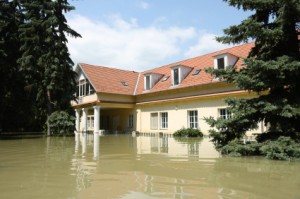Flood Insurance- What You Need to Know
Everyone is at Risk
Flooding happens every day in all regions of the country. Consumers must prepare for flooding no matter where they live. The Northeast can be affected by remnants of tropical disturbances in the summer, but are also threatened by winter flooding, nor’easters, and the threat of rapid spring melts. The Midwest experiences major river flooding – illustrated by the catastrophic floods of 1993 and 2008. The west coast’s intense flooding season typically spans November through March and results in millions of dollars in damage for residents each year.
Many consumers think that flooding related to hurricanes and other tropical disturbances are limited to coastal areas. However, some of the most damaging flooding can happen well inland and days after a storm makes its initial landfall. In 2007, Ohio, which has no ocean coastline, received more than $44 million in flood insurance payments.
Although many floods are caused by huge storms like hurricanes or nor’easters, more floods occur every day and can result from small, localized events, such as a typical afternoon thunderstorm. No matter where you live, it is important to remember that just a few inches of water in a home can cause thousands of dollars of damage.
Flood Insurance Misconceptions
Flooding is the United States #1 natural hazard. The National Flood Insurance Program wants consumers to know that while homeowner’s insurance won’t cover them against flooding, they can protect their home and property by purchasing a flood insurance policy separately through their local insurance agent.
Many people are under the misconception that they are ineligible for flood insurance because of where they live, or their mortgage status. But the truth is, as long as your hometown is an NFIP community, most homeowners, business owners and renters can get flood insurance. The NFIP urges consumers to remember the flood insurance basics:
- You CAN get flood insurance nationwide.
- You CAN get flood insurance if you live in a floodplain or high-flood-risk area.
- You CAN get flood insurance if you live outside a floodplain, or a low-to-moderate flood-risk area, – and at lower cost.
- You CAN get flood insurance if your property has been flooded before.
- You CAN get flood insurance from insurance agents in your area.
- You CAN buy flood insurance even if your mortgage broker doesn’t require it.
Armed with the proper information about their flood risk and protection options, consumers can make more informed decisions to protect their financial investments
Are your required to have it?
What to Expect-
Congress mandated federally regulated or insured lenders to require flood insurance on properties that are located in areas at high risk of flooding. If you’re not sure which area your property is in, call 800-228-7406 and we can run a quote and determine what the flood zone or flood risk area you are in.
Residents of High-Risk Areas
Homes and buildings in high-risk flood areas with mortgages from federally regulated or insured lenders are required to have flood insurance. These areas have a 1% or greater chance of flooding in any given year, which is equivalent to a 26% chance of flooding during a 30-year mortgage.
Residents of Moderate-to-Low Risk Areas
Homes and businesses located in moderate-to-low risk areas that have mortgages from federally regulated or insured lenders are typically not required to have flood insurance. However, flood insurance is highly recommended because anyone can be financially vulnerable to floods. People outside of high-risk areas file over 20% of NFIP claims and receive one-third of disaster assistance for flooding. When it’s available, disaster assistance is typically a loan you must repay with interest.
A lender can require flood insurance, even if it is not federally required.
Content provided by FloodSmart.gov
Need an insurance quote? Get in touch!
Access quotes from some of the Pacific Northwest's most trusted insurance carriers. It's comparison shopping at the click of a mouse.